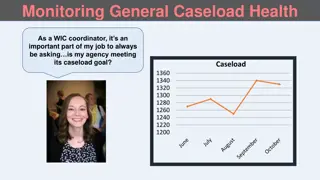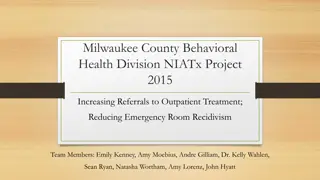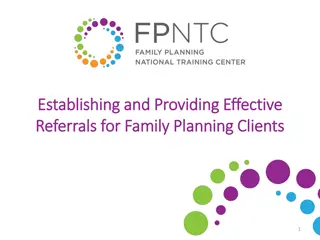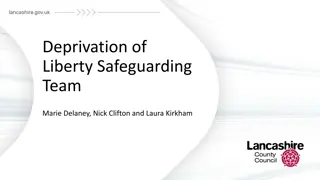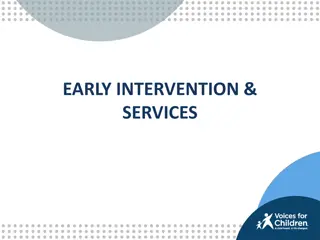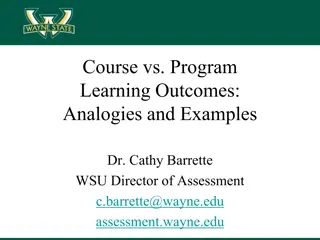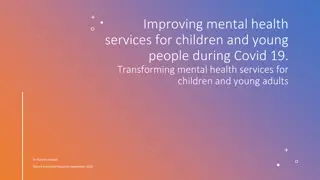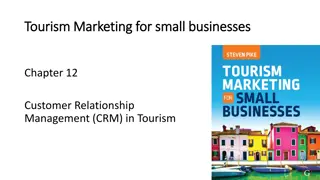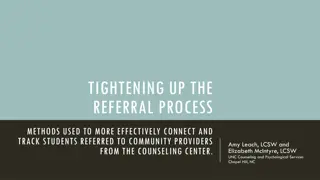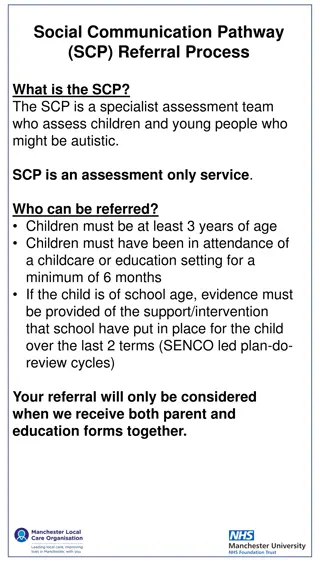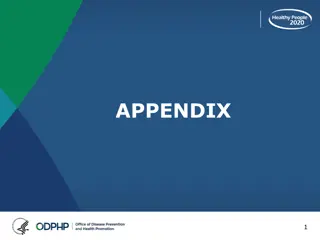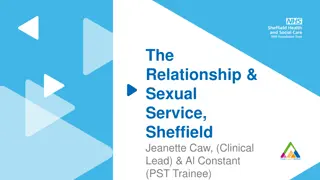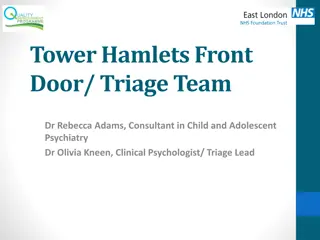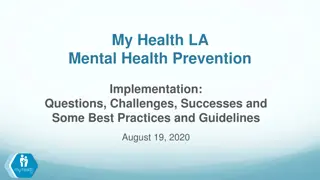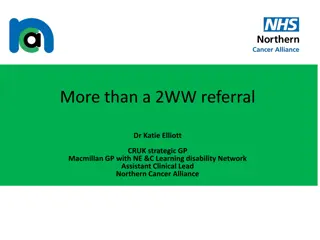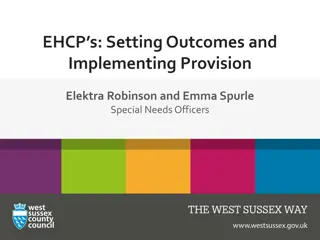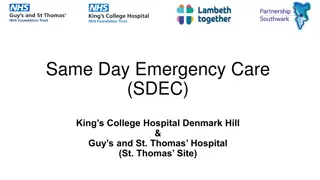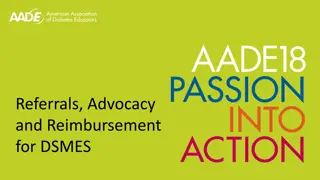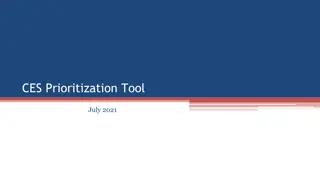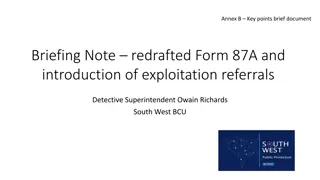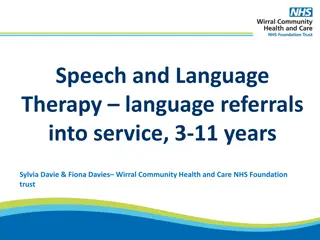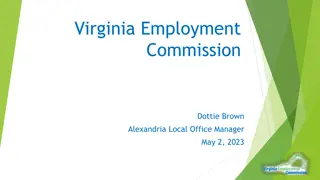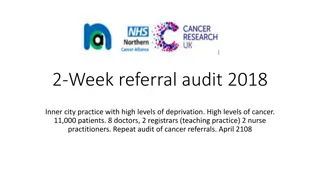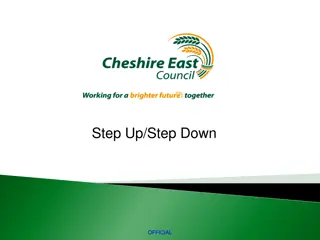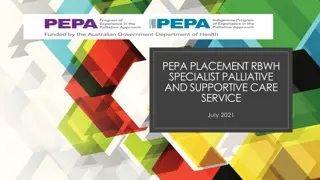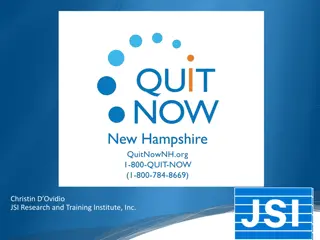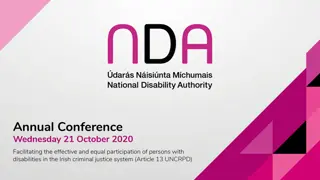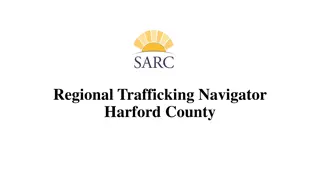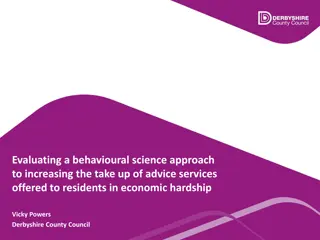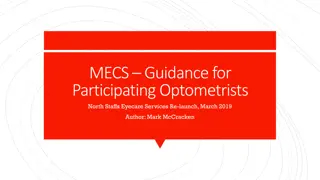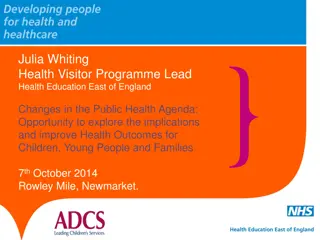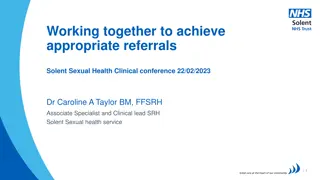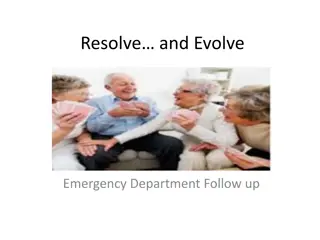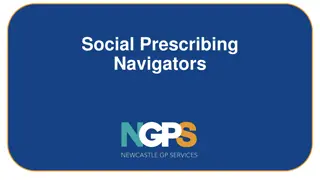Enhancing WIC Referrals for Improved Health Outcomes
Explore the importance of making effective referrals in WIC programs, understand the impact on families' health outcomes, and learn strategies such as participant-centered skills, prioritizing needs, providing specific information, addressing barriers, and follow-up for successful referrals.
Download Presentation

Please find below an Image/Link to download the presentation.
The content on the website is provided AS IS for your information and personal use only. It may not be sold, licensed, or shared on other websites without obtaining consent from the author. Download presentation by click this link. If you encounter any issues during the download, it is possible that the publisher has removed the file from their server.
E N D
Presentation Transcript
Thinking about participants you spoke to in the last week, Thinking about participants you spoke to in the last week, what was the most important referral you made? what was the most important referral you made? What made that referral important? What made that referral important? 2
Discussion How do referrals improve health outcomes for the families we serve? What factors influence whether a participant takes advantage of the referral offered? 4
Steps to offering a great referral Use your participant centered skills Identify and prioritize needs Provide specific referral information Help address barriers Follow up at the next visit 5
Use participant centered skills Ask permission to offer May be helpful when discussing sensitive referrals. Consider: : 1. 1. Cultural beliefs Cultural beliefs - - as these may greatly influence how a participant views asking for help 2. 2. Feelings Feelings - - since asking for help may be difficult for some participants. They may have feelings of shame, fear, powerlessness, or distrust 6
Identify and prioritize needs A thorough assessment will help identify potential referrals. Work with the participant to prioritize which referrals are most important to them. A participant may not prioritize her/his needs the same way you would. You can make suggestions and provide guidance and the participant will make the final decision. 7
Provide a specific referral Let the participant know how the agency can help. When possible, provide a contact name, address or map, phone number and the best time to call. Let the participant know what paperwork to take to the referral organization. 8
Help address Barriers Ask the participant how they plan to use the referral. Actively listen for any barriers that might prevent them from using the referral. Help the participant figure out how they can address barriers. You do not have to have the answers. Guide the participant so that they find the solutions that work best for them. 9
Follow up At the next visit, check in with the participant about the referrals. Ask a question such as How did the referral for _____ go for you? If the participant accessed the referral agency, affirm their efforts. If the participant did not follow up on the referral, explore if the need still exists and if any additional assistance is needed. 10
Everyone has a role Referrals can be offered from any WIC staff. Clerical staff May make referrals to OHP, SNAP/food stamps, TANF and/or immunizations when enrolling participants. Certifier s- May make unique referrals based on the need(s) that arise during the visit. 11
TWIST can help find a resource Referral categories make it easy to find resources that fit the participant s needs. 13
New fields have been added Email and website now available 14
What referral resources do we need in TWIST? Discussion questions 15
Documenting your referrals Enrollment button or Certification tab Anyone can make and document referrals 16
One referral record Referrals will automatically show in both places, regardless of where they are documented. 17
Producing written referrals from TWIST Click More Info and then click Print on the popup to generate a written referral that can be given to the participant. 18
Three required referrals 1. Alcohol or Drug Use 2. Immunizations 3. Oregon Health Plan (Medicaid) 20
1. Alcohol or Drug Use Referrals Use the normal assessment process to screen for alcohol, tobacco, or drug use If a positive response for alcohol or drug use, 1. Refer to treatment and provide a written referral 2. Provide written information on the dangers of alcohol and drug use Refer to Policy 880 for more information 21
Options for providing a written referral Locally produced listing of treatment options TWIST produced referral 22
Options for providing information Locally produced material What You Eat Makes a Difference (57-701) Noodle Soup pamphlet ordered from the state 23
2. Immunization Referrals Screen ages 3 to 24 months If immunizations are due, or if unable to review immunization record, must refer to health care provider Optional to print referral letter from the TWIST Immunization Status button See Policy 481 for more information 24
Referral Letter Shows date of info Missing shots Can print for PMD TWIST lesson Ch. 3, 404 25
3. Oregon Health Plan Referrals Every participant must be referred to Oregon Health Plan at every certification if they are not currently enrolled. A written referral must be provided 26
Options for written referrals to OHP Locally produced materials TWIST produced referral Safenet card 27
Case Studies 28
Case Study: Kim and Sara Kim applies for WIC for her 18 month old daughter, Sara. While completing the enrollment screens at check in, you find out that she recently left her husband and is temporarily staying with a friend. She works part time and thinks she might be eligible for food stamps. She has no immunization record and no primary doctor for Sara. When you click on the Immunization Status button, it says that since she is new, there is no information about her in TWIST yet. What referrals would you make? How would you make the referrals meaningful? 29
Case Study: Lauren and Elizabeth Lauren is a 6 weeks postpartum woman bringing in her new baby, Elizabeth. During counseling she breaks into tears when you ask about alcohol use. You find out that since her husband was deployed overseas she has been really sad and has been drinking a lot to help her sleep. She wants to keep breastfeeding but is sure that the alcohol is bad for the baby. She is on OHP and has a OB-GYN. What referrals would you make? How would you make the referrals meaningful? 30
Thank You 31


